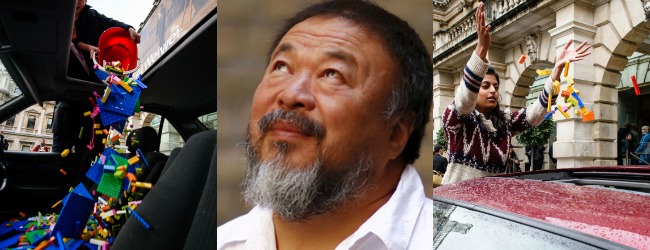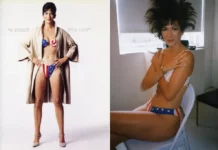
In September, Chinese artist Ai Weiwei placed a bulk order for plastic bricks from Lego to create artwork to be shown at Australia’s National Gallery of Victoria in December. However, the Danish toymaker denied the dissident’s request, citing a policy against “the use of Legos for political works”.
Ai, a longstanding critic of the Chinese Communist Party, posted a lengthy statement on Instagram calling the decision “an act of censorship and discrimination”. A picture of a toilet filled with the toy blocks and signed “R. Mutt 2015” – a reference to Marcel Duchamp’s 1917 “Fountain” – accompanied the post.
The refusal prompted an outcry on social media, with many offering their own Lego blocks to complete his installation.
@aiww use mine, more than happy to make it. pic.twitter.com/ouC66A6CwZ — Wu Tun 吴吞 (@wu_tun) October 25, 2015
Hey @aiww . What colour do you need? #NGVMelbourne pic.twitter.com/C9NDNqItSl — BobbieAnt (@bobbieskates) October 25, 2015
.@LEGO_Group this is about 10% of our #Lego collection. We won’t be buying more. @aiww you’re welcome to borrow it. pic.twitter.com/6mcq8RwXu3 — Dave Hall (@skwashd) October 25, 2015
.@aiww Here is something for your art. pic.twitter.com/0A26lFoMZy — Michael Heaney (@benchwhistler) October 25, 2015
support @aiww and freedom of expression through art in any media @LEGO_Group #legosforweiwei pic.twitter.com/oElnjlBQbh — Suzu King (@BellTree127) October 25, 2015
Ai answered his supporters’ calls by beginning to organize Lego-collection points in different cities. The first is a parked car, where fans can insert their Legos through the sunroof. Another car has been positioned in front of the Martin-Gropius-Bau, an art museum in Berlin. A third is installed at the National Gallery of Victoria in Melbourne, Australia. His studio is also taking donations by email.
Yes, I will find a way to accept. https://t.co/S7vW7hw76s — Ai WeiWei (english) (@aiww_en) October 25, 2015
In an email to the Guardian, Lego confirmed the order had been rejected on political grounds but said the principle “is not new”. Lego spokesman Roar Rude Trangbæk wrote:
“We acknowledge, that Lego bricks today are used globally by millions of fans, adults, children and artists as a creative medium to express their imagination and creativity in many different ways. Projects that are not endorsed or supported by the Lego group. However, as a company dedicated to delivering great creative play experiences to children, we refrain — on a global level — from actively engaging in or endorsing the use of Lego bricks in projects or contexts of a political agenda. This principle is not new.
“Any individual person can naturally purchase or get access to Lego bricks in other ways to create their Lego projects if they desire to do so, but as a company, we choose to refrain from engaging in these activities – through for example bulk purchase. In cases where we receive requests for donations or support for projects – such as the possibility of purchasing Lego bricks in large quantities – where we are made aware that there is a political context, we therefore kindly decline support.”
Lego will tell us what to do,or not to do.that is awesome! https://t.co/7VKGWBcKMg — 艾未未 Ai Weiwei (@aiww) October 25, 2015
In 2014, Ai used Lego to create portraits of 175 dissident figures who had been jailed or exiled, from Nelson Mandela to Edward Snowden, on the site of the former Alcatraz prison near San Francisco. Over the past few days, Ai has shared dozens of these portraits of political detainees on Instagram to protest Lego’s “act of censorship and discrimination”.
This Article (Fans Donate Bricks To Chinese Dissident Artist Who Was Refused Legos For Political Works) is free and open source. You have permission to republish this article under a Creative Commons license with attribution to the author and AnonHQ.com.




